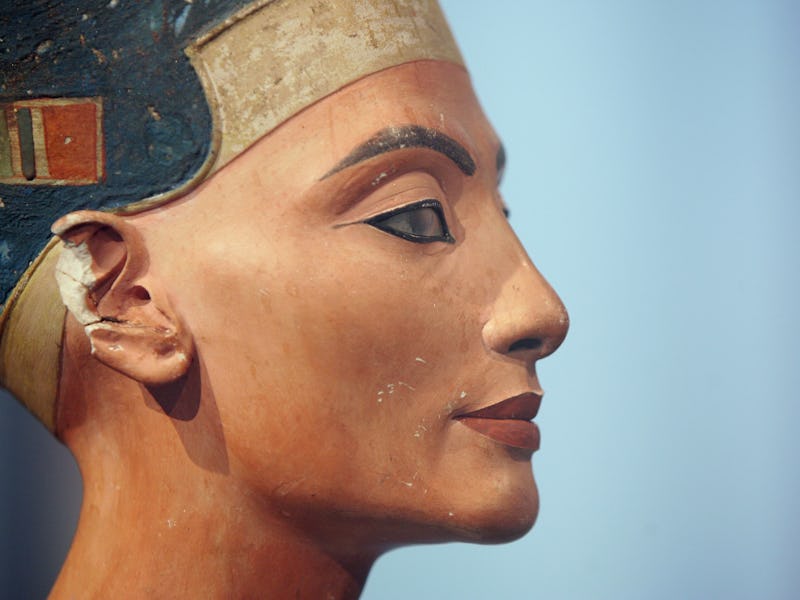New Inspection of King Tut's Tomb Reveals Secret Chambers
The possible doorway to Nefertiti's undiscovered tomb.

A new inspection of King Tutankhamun’s famed haunted tomb has given further credence to one archeologist’s theory that it was actually designed for Nefertiti — a mysterious and powerful possible pharaoh, who may have also been Tut’s mother.
National Geographic reports archeologist Nicholas Reeves, who embarked on the re-inspection on September 28, found evidence of two previously unnoticed doorways, believing Nefertiti may lie behind one of them.
Reeves examined the most minuscule details to determine his original theory may have some substance to it. He looked at lines on the ceiling and walls, and found matches between the two, which he says “suggests that the room was indeed a corridor.” That is, there once may not have been a wall there, and the space was plastered over to separate the rulers’ tombs. He also noticed a difference in texture and firmness of the plastering, meaning the area where he “suspect[s] there’s a doorway” was built after the original wall.
In addition to the archeological findings, Reeves believes Tut’s burial objects were meant for a woman. “I came to the conclusion that an estimated 80 percent of the burial equipment had been made for somebody else, for a woman,” he said after the tomb visit. Reeves’ hypothesis comes from years of studying various tombs and goods.
Basically, the whole tomb could have been planned out for Nefertiti, but given to Tut upon his untimely death.
The new evidence combined with Reeves’s existing theory likely mean further excavation. There is one catch: a priceless wall painting covers the suspected doorway. Reeves must now figure out how to get behind it without destroying the artifact. His first step is to use radar and thermal imaging to see as much as he can behind the wall before breaking through. Once he’s certain, he’s currently considering getting a tiny fiberoptic camera through the wall without much damage, or seeking Japanese conservators who specialize in removing wall paintings.
Reeves’ inspection could lead to new developments in a mystery that was largely solved by Howard Carter in his original 1922 excavation of Tut’s tomb. Learning more about Nefertiti could mean learning more about Tut, too, and Ancient Egypt as a whole.
Wikipedia